You know the importance of creating content for SEO. But, do you understand the main types of SEO content and when it’s best to use each one for your website? With unique frameworks and search engine guidelines, knowing their differences is key to maximizing ROI on your content marketing efforts.
Whether you want to boost conversions or increase keyword rankings, learn how to optimize your site’s online performance with these SEO content categories.
6 Types of SEO Content for Websites & How to Create Them for Optimal Online Performance
Below are the six main types of SEO content used for websites, their key differences, and how to create each one with the best practices to follow.
1. Cornerstone Content
Think of cornerstone content as your foundation for constructing a home. It’s what you’ll start with and build upon when creating future content. Also known as pillar content, it focuses on broader topics that you want your site to rank for and will eventually be expanded upon into more specific subtopics.
The purpose of cornerstone content is to bring evergreen SEO value to your website. It helps increase traffic and brand awareness by becoming a high-value resource specific to your industry. These are typically long-form and top-funnel-focused as they’re intended to attract readers and educate them.
If your business is a Chicago apartment property management company, a cornerstone content example would be creating a general Chicago neighborhood guide for renters. You should include key information that apartment seekers look for online, including the different Chicago boroughs, an embedded map, their rental market rates, budgeting advice, and leasing tips. This can be used as a blog or as a pillar page on your site, which we’ll detail further below.
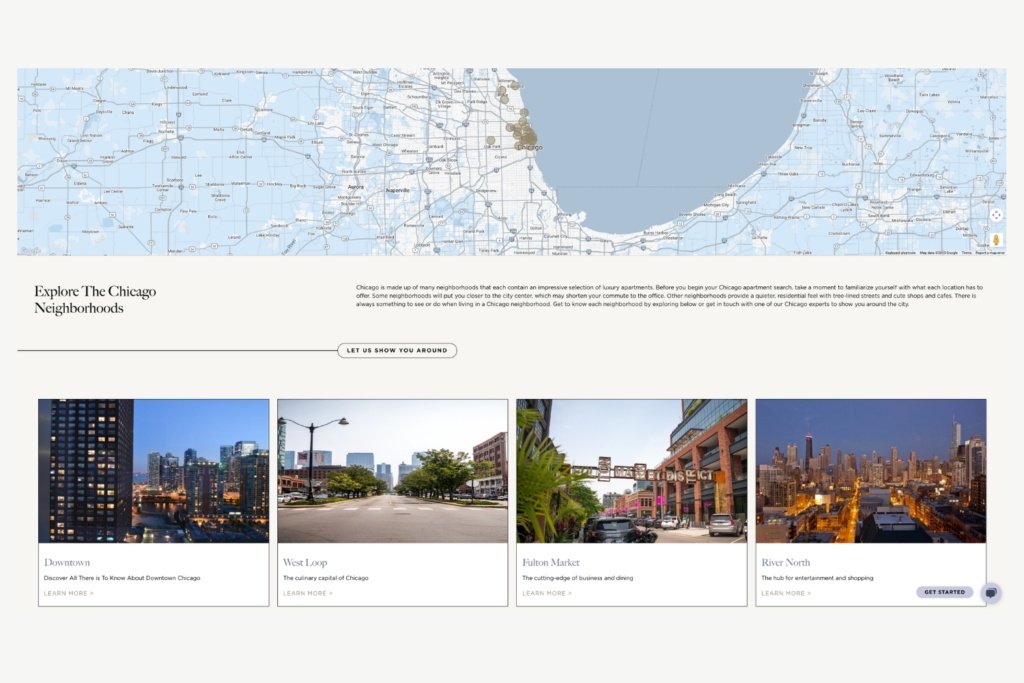
From there, you can create subtopic blogs or pages that dive deeper into Chicago neighborhoods, their top highlights, and why it’s worth living there as a renter while internally linking to your cornerstone content.
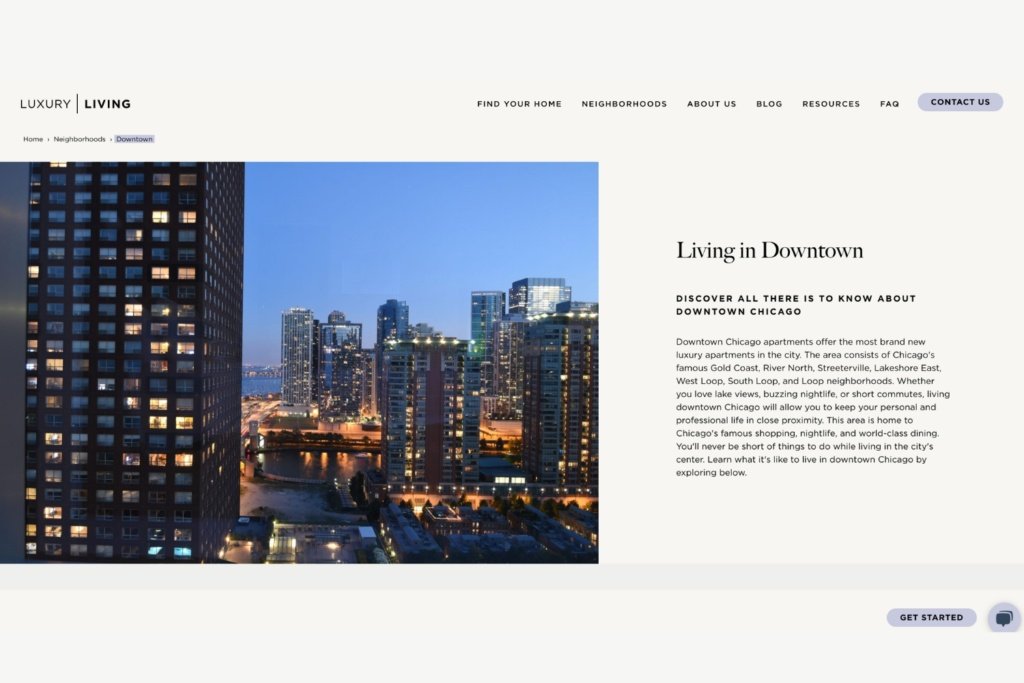
Cornerstone content is an effective way to start and execute an SEO content strategy successfully.
2. Pillar Pages
Pillar pages are a type of cornerstone content. They’re intended to establish authority on a broader topic by being placed in a key area of your website, typically in the navigation bar and footer. That’s why cornerstone content is also known as SEO pillar content.
If your business is a web design studio that wants to promote its virtual trade show rendering services, consider creating a pillar page on this topic. Keep in mind that this is different than a service page that may focus on custom 3D web design. This pillar page will focus more on designing virtual trade show booths, the rendering process, and commonly used user-interactive features.
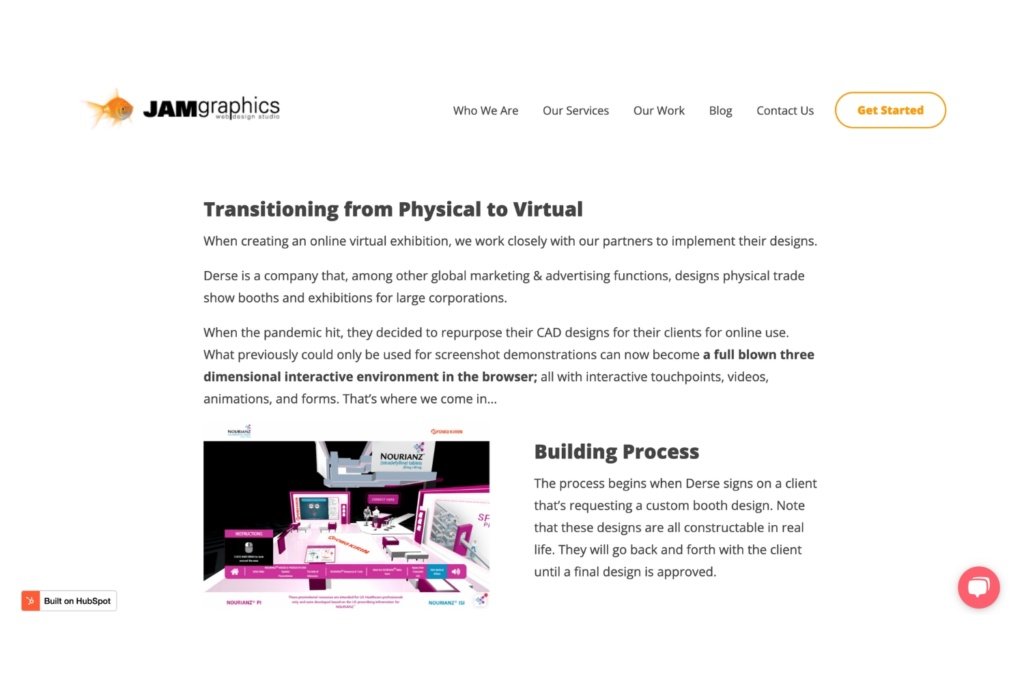
From there, you can create subtopic blogs that internally link to your virtual trade show pillar page, such as 2D vs. 3D booth designs. Linking to your pillar pages in content marketing is an effective way to strengthen your site’s on-page SEO and keep users on your site.
3. Skyscraper Content

Skyscraper content is a type of linkbuilding strategy. It’s meant to strengthen your site’s SEO performance by having high-ranking websites link back to your content. Also known as backlinks, these are among the top-ranking factors that Google uses in its algorithm. That’s where the skyscraper content comes into play.
Known as the skyscraper SEO technique, it finds high-ranking content and what external links they’re currently using. Then, you’ll create your own version of it–but better. That way, when you’re doing backlink outreach, your skyscraper content will replace the existing one they’re linking to because it’s higher quality and mutually beneficial.
So, how exactly do you create better skyscraper content that’s already out there?
Look for the following factors:
Keyword Opportunities
Check for the highest volume keywords that can be used to naturally optimize your content’s headings, text, and metadata. If there are several question-based keywords that the competitor is using as headings, take this opportunity to create an FAQs section and use it there instead.
Adding FAQs is not only a great way to rank for question-based keywords, but it can also help your content generate rich results–which users click on 58% of the time versus 41% of non-rich results. Because it visually displays your content differently and above traditional search results, it makes your skyscraper content stand out and perform better–making it more likely that your linkbuilding strategy will succeed as a result.
Visual Opportunities
There are several ways to make your skyscraper content visually stand out from competitors.
Before designing visuals, ask yourself the following questions:
- What types of media are they using? Does the competitor’s content have strong, clear visuals that support the topic’s purpose?
- Are the paragraphs small and easy to read?
- Is the content heading structure properly formatted? Or can it be broken down further so users can quickly scroll and know exactly what the topic is about?
Once you know the answers to these questions, you can find opportunities to make your skyscraper content’s visuals better. For example, if they wrote about a topic on on-page vs. off-page SEO, but only used stock images or graphics, create a comparison chart. It can be a graphic or a table that visually recaps their key differences more effectively.
Content Writing Opportunities
In addition to content visuals, the quality of its text is even more important. For example, if a website you want to gain a backlink from is currently linking to a dated blog, create a current-year version of it. Topics like “2024 Best SEO Content Writing Practices” can be replaced with a 2025 version to ensure it remains relevant and accurate.
Also, look at how helpful the content is. If the competitor is providing SEO content tips, like “make your content mobile-friendly,” but doesn’t provide how to do this or a link, include this in your skyscraper content. Add actionable steps they can take to optimize their content for mobile, like using flexible web page layouts and implementing max-width image source codes so the page is responsive on all devices.
This step creates higher-quality skyscraper content that supports your linkbuilding efforts and is another top-ranking factor in Google’s E-E-A-T framework (Experience, Expertise, Authoritativeness, & Trustworthiness) to provide helpful, relevant people-first information.
4. Blog Content
Blogs may seem like a straightforward type of SEO content, which is informative articles. However, businesses often make mistakes when writing them that don’t support their site’s SEO goals effectively. Among the most common ones is doing keyword research the wrong way. While finding keywords with the highest volume is important, it’s not the only aspect to look for.
You should also check the keyword’s search intent, which tends to be overlooked or not fully understood. Search intent is the general reason behind a person’s online search. Since blogs are top and middle-funnel, using bottom-funnel keywords wouldn’t be relevant to them and can hinder the content’s SEO performance.
For example, you wouldn’t use “running shoes” as the focus keyword in your “best running shoes” blog. It has a transactional intent that generates product pages in the search results for people ready to buy, not blogs.
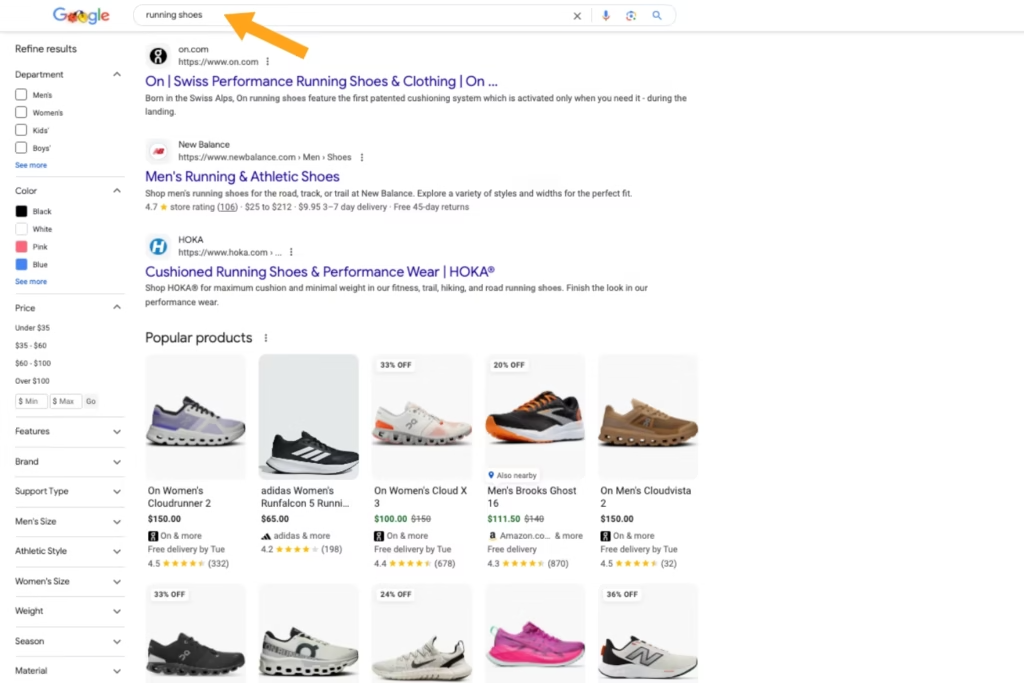
Instead, you’d find variations of the keyphrase “best running shoes” or “running shoes recommendations” that support an informational intent and generate blogs in the search results.
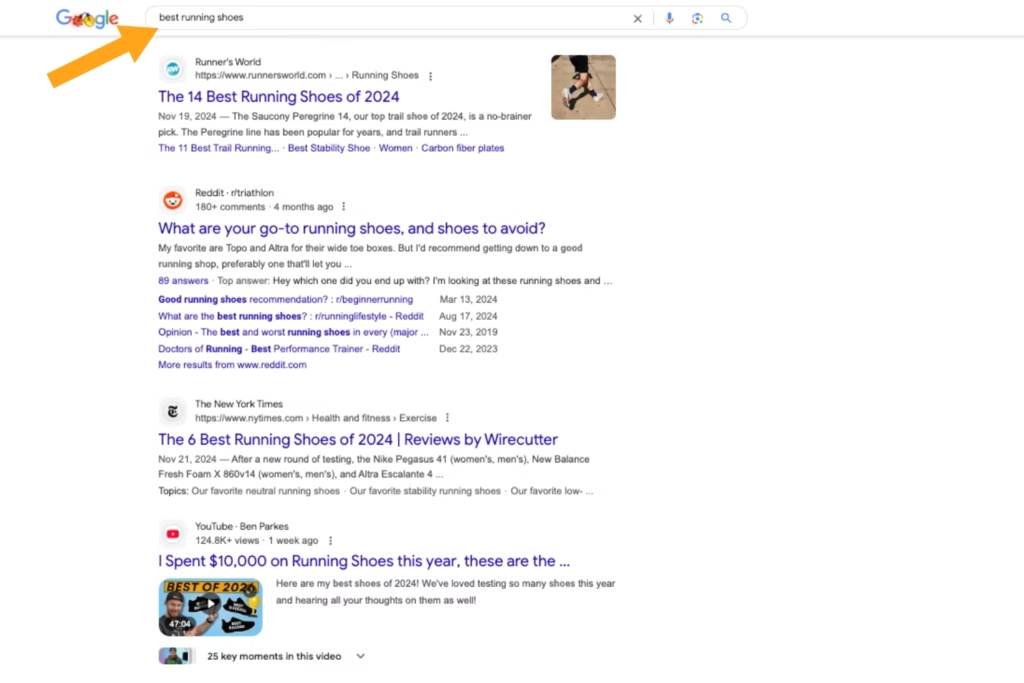
You can easily confirm a keyword’s intent on Google and review what the search results show, or use SEO tools, like SEMRush, that will tell you.
Additional tips for creating high-ranking blog content include:
- Internally linking to product/service pages to increase conversions
- Internally linking to relevant cornerstone content and pillar pages to keep users on your site
- Externally linking to reputable sites that support claims and data used in your blogs
- Organized content structure with proper heading hierarchy, small paragraphs, and supportive visuals
- Compelling storytelling with introduction hook statements that grab readers’ attention, address their common pain points, and provide actionable solutions
- Adding primary and secondary keywords throughout the text. Using long-tail keywords or adding them to more detailed headings can also help rank blogs for AI search engines.
Quality blog content can be one of the highest ROI drivers over time because your target audience is coming to your website from them, engaging with the site, and building your brand’s credibility.
5. Landing Page Content
Landing pages are a bottom-funnel type of SEO content. It’s the final destination after users see an offer of yours and click to learn more about it. They’re intended to attract transactional intent users and encourage them to complete their buyer’s journey for conversions.
Some examples of landing page content are:
- Email blasts linking to a referral program page for existing customers to get a reward if someone they know buys from you
- PPC ads linking to a product holiday discount page
- Social media posts linking to an event registration page
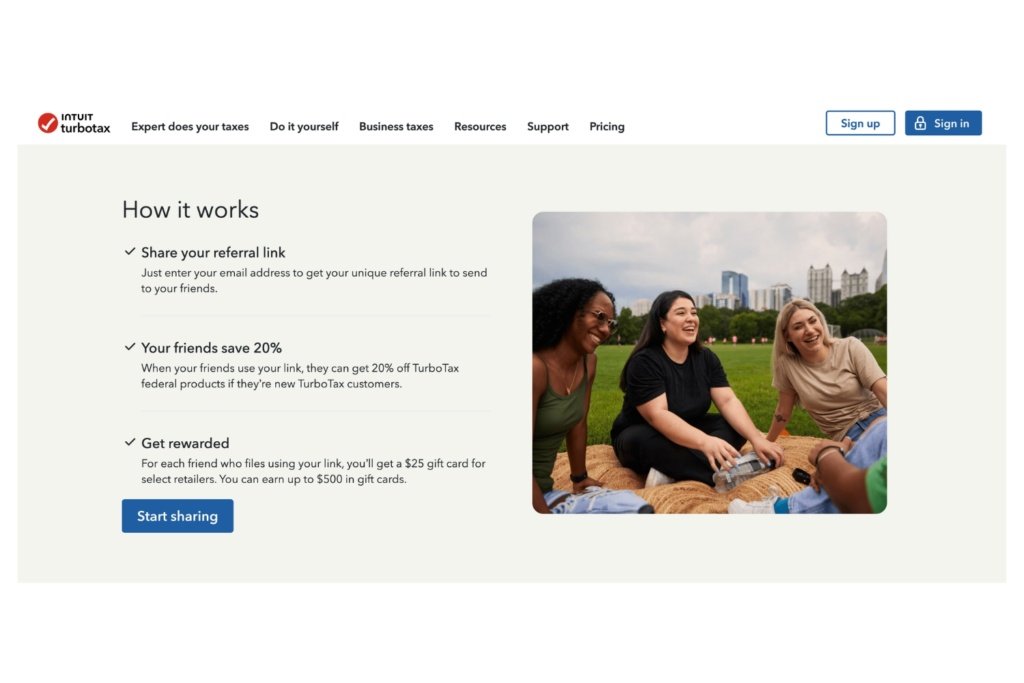
Creating landing pages requires a persuasive tone with short-form content and actionable language that aligns with where users are coming from. People who are visiting this page are already interested, so they shouldn’t have to sift through long paragraphs or irrelevant content. It should be easy for them to learn more about your offer and take action.
Additional tips for creating effective landing page content include:
- Keep the landing page design consistent with where users came from to prevent confusion and ensure visitors that they’ve come to the right website
- Implement a single call-to-action (CTA) or multiple buttons (sparingly) that lead to the same action you want people to take
- Write short and simple action words that encourage users to take the next step in an appealing tone, such as: “Ready to stop wasting budget on PPC ads? Find out where.” over “Learn More or Contact Us.”
Landing page content requires finesse and punchier writing to make your offer worth it.
6. Lead Generation Content
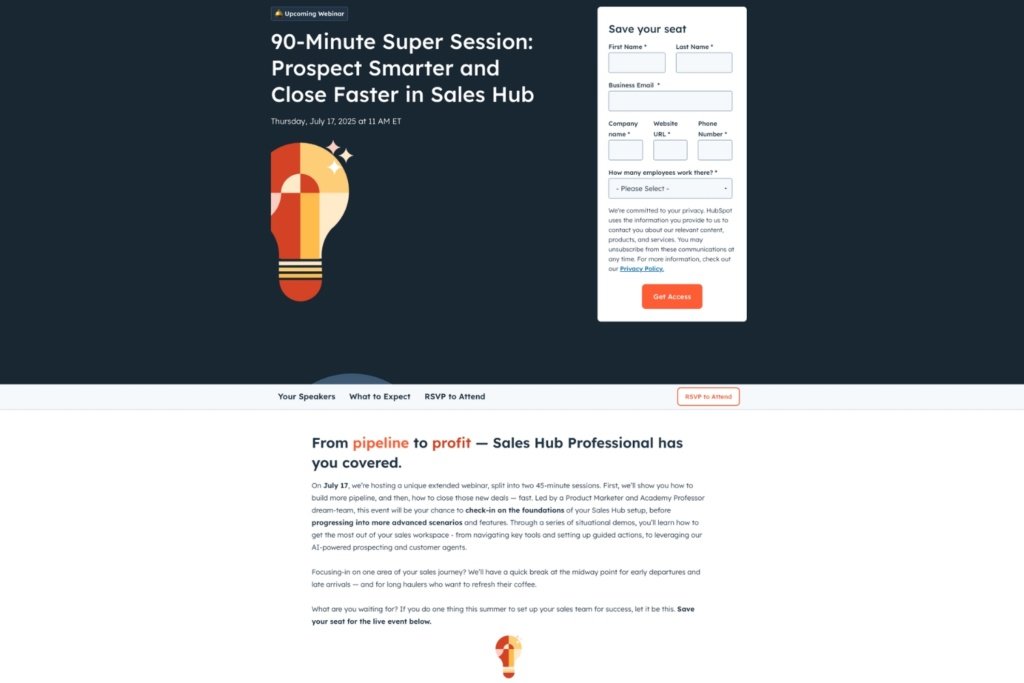
Lead generation content is also bottom-funnel. It’s similar to landing pages, except it focuses on capturing leads versus conversions, although that’s the ultimate goal. They’re designed to gain the contact information of your target audience and, in exchange, give them a valuable resource.
Common types of lead generation content are:
- Whitepapers or e-books that offer industry-specific insights from a notable expert, if they fill out a form with their name and email
- Webinars where people must register online to attend the event
- Downloadable templates or checklists that are sent to the submitted email address
Also known as lead magnets, their purpose is, as the name suggests, to convert visitors into leads, then eventually customers. Accessing their contact information allows you to build customer data profiles to customize your content marketing strategies and target the right audience. If you don’t know who your buyer personas are, this is an effective way to learn.
When writing lead generation content, ensure the offer you’ll bring in exchange is valuable to them, or they’ll look elsewhere where it isn’t gated. It should have a simple form with minimal fields (name, email, phone number) and short-form text that further promotes the offer. Lead generation content is also commonly used in landing pages.
Types of SEO Content FAQs:

What is Cornerstone Content?
Cornerstone content is a foundational type of top-funnel content marketing. It’s used to create general and high-value evergreen content relevant to your brand that you want to rank for, and then write specific subtopics from it to become an authoritative online resource in your industry.
What is the Difference Between Cornerstone and Foundation Content?
There’s no difference between cornerstone vs. foundation content. These are interchangeable terms used to describe broader, top-funnel content used as a foundation for your website to start improving its SEO performance.
What is Pillar Content?
Pillar content is another term often used to describe cornerstone content.
How Many Content Pillars Should You Have?
There isn’t a set number of content pillars you should have, as it depends on several factors, including:
- Website size and template
- Content marketing goals
- Industry
- Product/service offerings
As a general rule of thumb, three to five content pillars are the best practice for most brands.
What is Skyscraper Content?
Skyscraper content is a type of linkbuilding strategy used to find high-ranking sites, create better content than they’re currently linking to, and become a replacement backlink.
Strengthen Your Site’s SEO with Smarter Content Choices
Content marketing is a multi-faceted approach. It requires a unique understanding of all SEO content types and consistent creation to generate optimal results for your website.
Don’t create content for the sake of doing it. Maximize your ROI with content marketing specialists instead.
At Reach Marketing Pro, we’re a full-service digital agency with extensive experience in all aspects of SEO content marketing, including website pages, blogs, and lead magnets. With in-house SEO writers, graphic designers, and web designers/developers, we know how to customize your content and make it stand out online.
Ready to build better SEO content for your site?
Explore our SEO services or talk to our SEO experts today!

